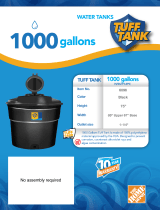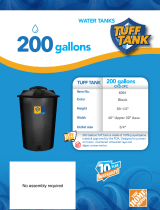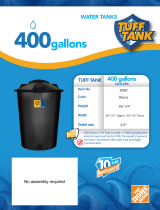
This symbol means WARNING or Manuals and Operator's Manuals are available through
PERSONAL SAFETY INSTRUCTION your local Toro distributor or by writing to:
read the instruction because
it
has to
do with your safety. Failure to comply
with the instruction may result in
personal injury or even death.
The Toro Company
Publications Department
Aways read and follow the safety instructions provided
8111 Lyndale Avenue
South
in the applicable service manual or operators manual Bloomington,
MN
55420
for the equipment you are working on. Service
Avoid injury from high pressure oil
Keep body and hands away from pin hole leaks or
nozzles that eject high pressure oil. Use cardboard or
paper to locate hydraulic leaks. Oil escaping under
high pressure can penetrate the skin and cause injury.
Oil accidentally injected into the skin must be surgically
removed within a few hours by a doctor familiar with
this form of injury or gangrene may result.
Avoid unexpected starting of engine
Always turn off the engine and disconnect the spark
plug wire(s) before cleaning, adjusting or repairing.
Avoid lacerations and amputations
Stay clear
of
all moving parts whenever the engine
is
running. Treat all normally moving parts as
if
they were
moving whenever the engine is running or has the
potential to start.
Avoid burns
Do
not touch the engine, muffler, or other components
which may increase in temperature during operation,
while the unit is running or shortly after it has been
running.
Avoid fires and explosions
Avoid spilling fuel and never smoke while working with
any type of fuel or lubricant. Wipe up any spilled fuel or
oil immediately. Never remove the fuel cap or add fuel
when the engine is running. Always use approved,
labeled containers for storing or transporting fuel and
lubricants.
Avoid Asphyxiation
Never operate an engine in a confined area without
proper ventilation.
Avoid injury from batteries
Battery acid is poisonous and can cause burns. Avoid
contact with skin, eyes and clothing. Battery gases can
explode. Keep cigarettes, sparks and flames away
from the battery.
Avoid injury due to inferior parts
Use only original equipment parts to ensure that
important safety criteria are met.
Avoid injury to bystanders
Always clear the area of bystanders before starting or
testing powered equipment.
Avoid injury due to projectiles
Always clear the area of sticks, rocks or any other
debris that could be picked up and thrown by the
powered equipment.
Avoid modifications
Never alter or modify any part unless it is a factory
approved procedure.
Avoid unsafe operation
Always test the safety interlock system after making
adjustments or repairs on the machine. Refer to the
electrical chapter later in this manual for more
information.






















